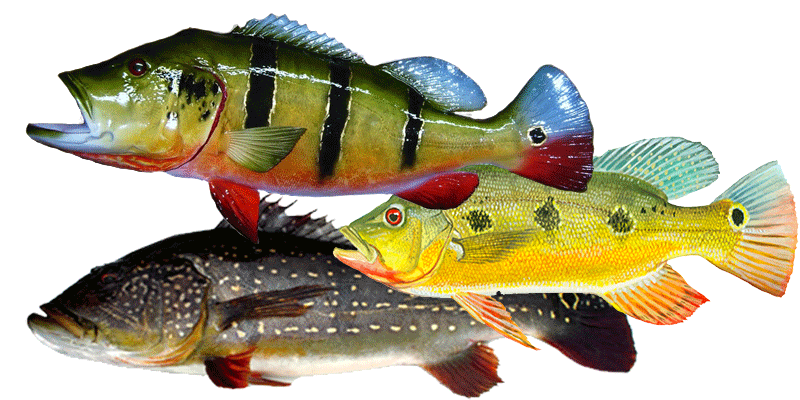|
First off, it’s not a bass, it’s a Cichlid; a family of highly evolved and specialized fishes particularly prominent in South America. There are currently 15 different species of peacock bass (Genus: Cichla) recognized, but only one species is the target of trophy anglers. Although all are relatively large, diurnal predators and all are commonly known as peacock bass, only Cichla temensis, achieves the enormous size and delivers the spine-tingling power that so much has been written about.
Reaching up to 30 pounds, Cichla temensis are the largest of the peacock bass species. Their violent surface attacks and aggressive behavior make them the most exciting of all as well. Their natural environment of black water rivers exists primarily in the Rio Negro, lower Madeira and Orinoco drainages. The vast bulk of this range lies in Brazil’s enormous state of Amazonas.
Peacock bass have evolved into one of the most efficient predators in the world. Their speed, strength, size and ferocity enable them to make a meal of almost every other smaller species of fish in the Amazon.
Cichla temensis are very sensitive to water temperature and are essentially restricted to the equatorial tropics of Amazonia..
Cichla temensis coloring and appearance is widely varied through its range and specimens from the same waters can often appear to be members of different species.. When in spawning mode, three black, vertical bars of varying size and intensity mark their sides. Before or after spawning Cichla temensis individuals’ color and pattern is strikingly different, displaying dotted, horizontal white lines overlaying the pattern on their sides. Individuals in this form are called "paca"
Cichla Orinocensis, the Amazon butterfly peacock, is found in much of the same waters as its larger cousin. Although rarely exceeding 7 or 8 pounds, they are terrific fighters and readily strike many of the same baits as their larger cousins.
|


